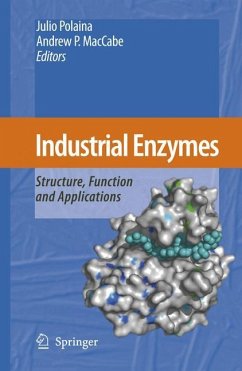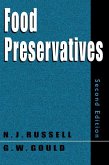Man's use of enzymes dates back to the earliest times of civilization. Important human activities such as the production of certain types of foods and beverages, and the tanning of hides and skins to produce leather for garments, serendipitously took advantage of enzyme activities. Important advances in our understanding of the nature of enzymes and their action were made in the late 19th and early 20th centuries, seeding the explosive expansion from the 1950s and 60s onward to the present billion dollar enzyme industry. Recent developments in the fields of genetic engineering and protein chemistry are bringing ever more powerful means of analysis to bear on the study of enzyme structure and function that will undoubtedly lead to the rational modification of enzymes to match specific requirements as well as the design of new enzymes with novel properties.
This volume reviews the most important types of industrial enzymes, covering in a balanced manner three interrelated aspects of paramount importance for enzyme performance: three-dimensional protein structure, physicochemical and catalytic properties, and the range of both classical and novel applications.
The material covered will be of interest to undergraduate and graduate students in biochemistry, biotechnology and applied microbiology in addition to researchers and industrialists.
This volume reviews the most important types of industrial enzymes, covering in a balanced manner three interrelated aspects of paramount importance for enzyme performance: three-dimensional protein structure, physicochemical and catalytic properties, and the range of both classical and novel applications.
The material covered will be of interest to undergraduate and graduate students in biochemistry, biotechnology and applied microbiology in addition to researchers and industrialists.
From the reviews:
"This is a book worth adding in one's collection and is most suitable for advanced students and professionals. This compendium consists of in-depth reviews prepared by authoritative sources. It is extremely informative, presenting detailed facts on the history, sources, active sites, reaction mechanisms, substrate specificities, structures (native and redesigned), and applications for 34 classes of enzymes that have industrial applications. ... Summing Up: Recommended. Graduate students through professionals." (J. M. Tomich, CHOICE, Vol. v4 (3), November, 2007)
"This is a book worth adding in one's collection and is most suitable for advanced students and professionals. This compendium consists of in-depth reviews prepared by authoritative sources. It is extremely informative, presenting detailed facts on the history, sources, active sites, reaction mechanisms, substrate specificities, structures (native and redesigned), and applications for 34 classes of enzymes that have industrial applications. ... Summing Up: Recommended. Graduate students through professionals." (J. M. Tomich, CHOICE, Vol. v4 (3), November, 2007)








